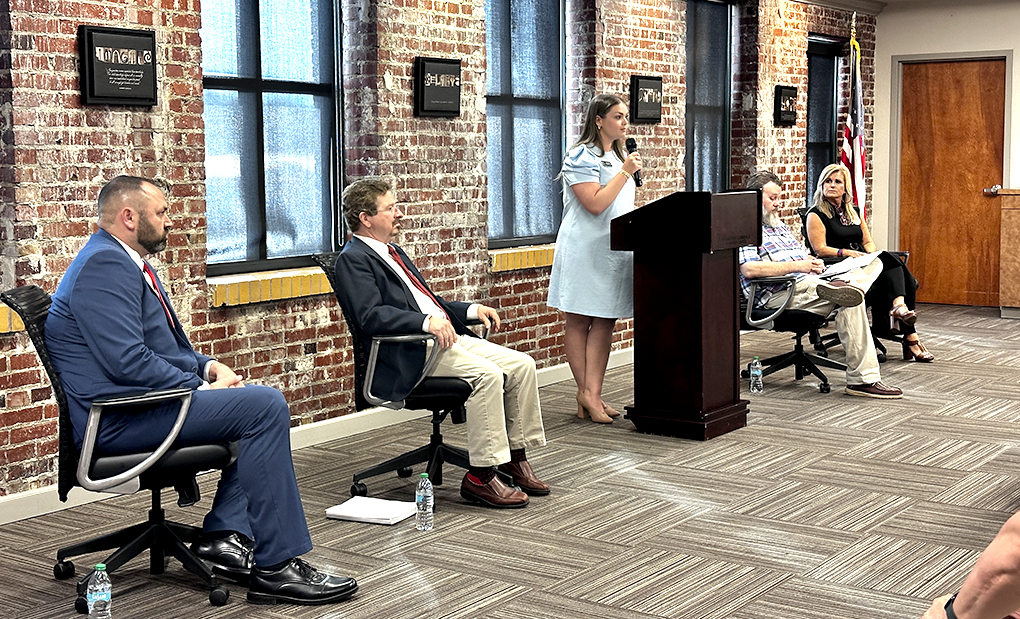Social security’s woes are worse than you think
Published 12:48 pm Sunday, August 10, 2014
While the Romney and Obama camps have made increasingly bitter accusations about each other’s plans for Medicare, a bipartisan consensus on entitlements has emerged in the past few years. Too bad that consensus is wrong.
On both left and right, the politicians and the experts are saying the United States needs to fix Medicare — and have made fixing Social Security an afterthought. President Barack Obama has signed changes to Medicare into law, but has done nothing about Social Security. For two years in a row, Republicans in Congress have supported budgets that rein in the growth of Medicare spending but leave Social Security alone. Expect to hear a lot more about Medicare than Social Security at the Republican convention this week.
The main reason Medicare is getting more attention is that in the long run, it has much higher costs than Social Security. That’s why it’s often described, accurately, as the driver of America’s long-term debt problem.
The Social Security gap looks small, though, only in relation to Medicare. On any other scale, it’s pretty big. The 1983 deal to fix Social Security is often held up as a model of bipartisan achievement, with the implication that it just needs to be replicated to fill the gap: No big deal. Charles Blahous, a Social Security trustee and the author of a recent book on the program, points out that this model is actually pretty discouraging.
In 1983, the financing gap over the next 75 years amounted to 1.8 percent of payroll. Blahous estimates that the gap today, measured using the same standards as in 1983, is 3.5 percent: almost double what it was then. And every year that passes without action, that number gets bigger. Do we think today’s politicians are prepared to solve twice as large a problem as their predecessors did?
Right now, we spend more money on Social Security than on Medicare, and that will remain the case for a while. The programs’ trustees project that by 2035 Social Security will consume 6.4 percent of the economy and Medicare 5.7 percent. The Medicare projection may be optimistic about recent attempts to impose cost controls, but we shouldn’t expect Medicare to become vastly larger than Social Security in the next two decades. After that point, Social Security costs start going down as demographics play out while Medicare becomes a vastly larger problem.
But our finances will be in what’s technically called a world of hurt before Social Security costs peak. Under current projections by the Congressional Budget Office, by 2025 public debt will have reached 106 percent of gross domestic product. By 2035, it will have reached 181 percent. What would happen after that point is an academic question: We can’t allow ourselves to get there.
We need to fix both programs. If anything, it’s Social Security that ought to be saved first because it’s the more urgent near-term problem. Some of the steps we can take to make the program solvent, moreover, would improve Medicare’s finances, too. Raising the retirement age, for example, would encourage people to work longer and thus pay more taxes into both programs.
Perhaps even more important, we have a better sense of how to restrain the growth of Social Security than of Medicare.
One promising option is to reduce the growth of Social Security benefit levels, especially for high earners. The program could be reformed so that high earners who retire in 2040 receive the same benefit level that high earners who retire in 2020 will — with an adjustment for inflation, but nothing more. Under the program as it stands now, those future retirees will get a bigger benefit.
Benefit levels for people in the middle of the income spectrum, meanwhile, could be set so that they more than keep up with inflation but don’t rise as much as currently scheduled.
It’s easy to attack this sort of proposal. In the past, opponents have said, for example, that it would be a draconian 40 percent cut in benefits for high earners. That’s true, when the proposal is compared with the benefit levels that the law has scheduled but hasn’t figured out how to pay for. Compared with today’s benefit levels, though, it’s not a cut at all.
Democrats will prefer to raise taxes, especially on high earners, to let benefits grow faster. The drawback to this approach is that higher payroll taxes, the CBO has found, discourage people from working and saving. We would be taking a hit to economic growth for a purpose — boosting benefit levels for relatively well-off seniors — that shouldn’t be a high social priority. It seems perverse to raise taxes on high earners to finance higher benefits for them.
Just to have that argument over taxes and benefit levels would be progress. One way or the other, we need to get Social Security’s finances in order, instead of acting as though there’s no problem to be solved.





